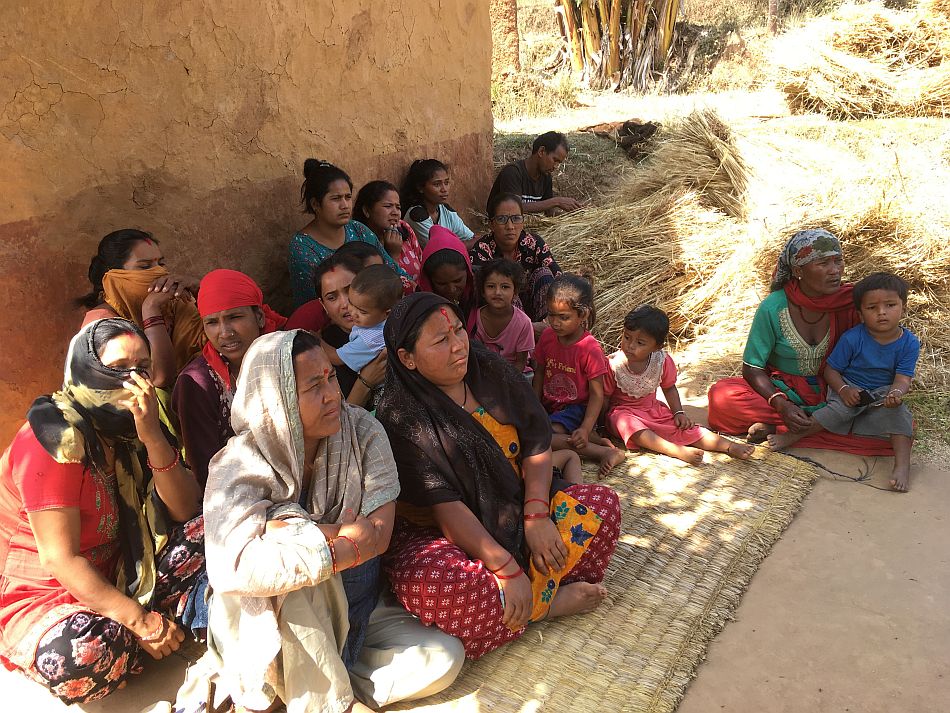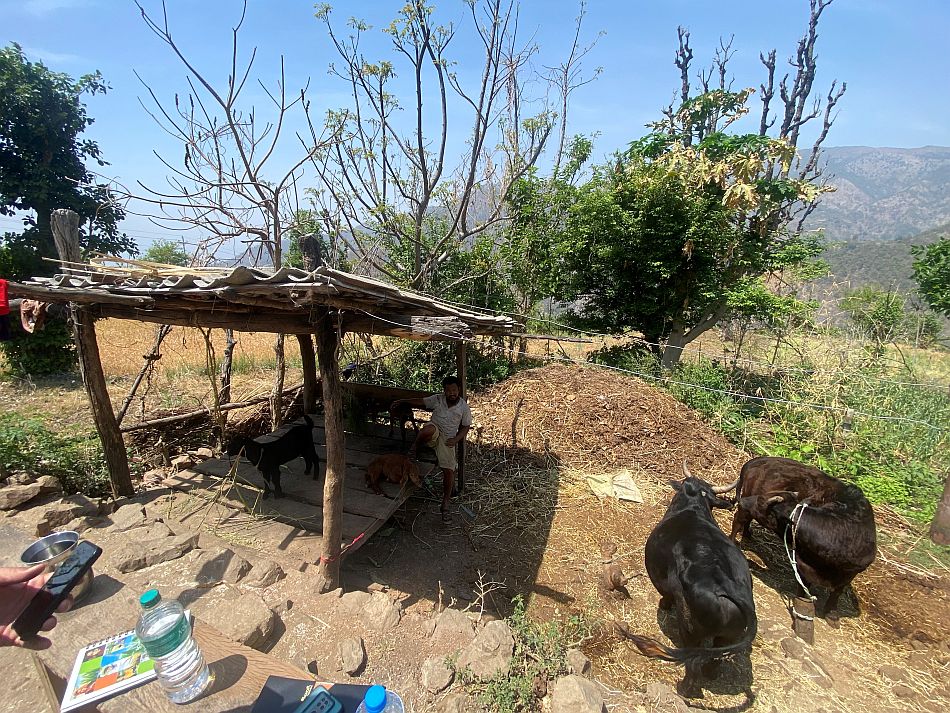By Nirman Shrestha, Regional Researcher, Agricultural Water Management, IWMI and Carolyn Fry, IWMI Consultant
More than half of Nepal’s four million farmers work land of less than half a hectare. Low levels of agricultural knowledge, combined with limited land ownership, irrigation, and appropriate seeds, fertilizers and pesticides, means that most smallholders (79%) earn less than USD 377 per year and do not produce enough to feed their families for even six months. As a result, many households suffer from poor nutrition, with family members forced to travel to cities or abroad to seek alternative employment.

To gain an income and guard against food shortages, many smallholder farmers from the hilly region (1000–2000 meters above sea level) combine rearing livestock with growing cereal crops. This mixed farming system is beneficial as the livestock contribute draught power and manure to crop production. However, with the average yield of major cereal crops only 2.1 tons per hectare, farmers must gain 60% of their overall annual household income from non-agricultural income or borrowing.
The Sustainable Intensification of Mixed Farming Systems (SI-MFS) program, which is just getting under way, aims to help Nepal’s smallholders to gain a better livelihood from farming. This three-year One CGIAR Initiative, (which is also working in Bangladesh, Ethiopia, Ghana, Laos, and Malawi) has identified that climate change, population pressure, urbanization, water scarcity, changing diets, and volatile food prices are key drivers of change in mixed-farming systems. It aims to support smallholders to produce more food from their land – while boosting nutrition, reducing poverty, generating opportunities for women and young people, mitigating and adapting to the impacts of climate change, and underpinning environmental health and biodiversity.
Learning about smallholders’ lives
Earlier this year, experts from CGIAR centers IWMI and the International Maize and Wheat Improvement Center (CIMMYT), plus the non-governmental organization (NGO) iDE-Nepal visited Gurbhakot municipality of Karnali province’s Surkhet district to identify potential research sites, entry points for supporting farmers, and partners for the SI-MFS initiative. The visit, to sites at Subhakot, Lamkane, Khare and Belgaira, included consultations with several local farmer groups. More than 90% of participants in these discussions were women.
The farmers ranged from landless (using Ailani – unregistered – land) to owning over 20 katha (1 katha = 0.03 hectares). Rainfed wheat, maize, pulses and mustard were the main crops grown but some farmers located near a river or other water source were able to grow irrigated rice. All sites had access to drinking water, most of which was available 24 hours a day; this water was also used to irrigate homestead gardens growing vegetables to feed the household. Two-thirds of farmers raised livestock, including goats, oxen, sheep, cows, buffalo, chickens and pigs.
The discussions revealed that households would sell goats or pigs to nearby markets when they needed income. In two-thirds of participating families, at least one male would travel to India or the Gulf States to work in tourism, construction or other sectors, leaving the women to tend the farm. “We don’t have enough production even for two or three months, so our male family members go abroad to earn money and support us,” said one farmer. Other issues raised by the smallholders included: having insufficient land and no access to irrigation; the inaccessibility of information and agricultural extension services, such as around crop fertilizers and pesticides; having insufficient fodder for livestock; the sickness of animals and expense of vets’ bills; and not being able to produce sufficient milk for the family to drink.
During the visit, 11 men and four women from government departments, NGOs, INGOs, farmer organizations and private partners attended a stakeholder discussion in Birendranagar in Surkhet district to discuss ongoing projects, the lessons that could be learned from them, and possible SI-MFS entry points. This meeting highlighted the importance of involving local farmers in co-designing interventions. Ensuring local ownership, engaging different partners from the start, and including government bodies at varying levels were deemed to be critical. Participants also emphasized the need for effective agricultural-input and market-value chains, and pointed out that interventions should not be limited to production and technology but should also focus on socio-economic issues.

Identifying ways to boost livelihoods
Based on the initial site visits and discussions with farmers and other involved parties, the SI-MFS team have put forward the following entry points for co-designing interventions for sustainably intensifying Nepal’s mixed farming systems:
- Improving diet and nutrition by increasing vegetables and livestock
This will involve introducing sustainable, climate-smart irrigation, enabling farmers to grow vegetables with a higher water productivity than cereal crops. Meanwhile, improved livestock management, involving composting and the better use of manure, will help to boost soil health, water storage and use, and the efficiency with which nutrients are used. Introducing two-wheel tractors and reapers for communal use via appropriate service-provision models will support women farmers to save water and time. - Reducing poverty, and mitigating/adapting to climate change through fodder production
Lucerne alfala or Napier grass fodder will be introduced for farmers to grow around the homestead and in terraces. This will support improved breeds of livestock. The shift will be supported by better and more equitable access to extension services, livestock feeds and livestock markets. Capacity building is also planned on ways of producing high-nutrient fodder and feed.
These potential changes will be discussed at an inception workshop to be held on 24 August 2022. This will enable more detailed plans to be developed, to ensure that the proposed new approaches and techniques are appropriate to farmers’ individual situations and the wider environmental context. In the long term, supporting Nepal’s mixed farmers in this way has the potential to not only help them gain a better living from farming but also to contribute to achieving the UN Sustainable Development Goals (SDGs).
Watch this space for more updates on the SI-MFS programme in the coming months.

